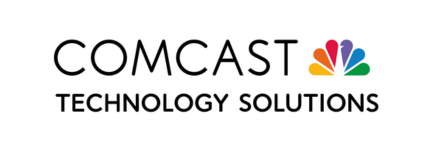
Production Line: The Three Stages of Problem Solving with Sinead Catney

Sinead Catney is a senior producer at The Mill's London Studio. Having worked in the advertising industry for eight years, she started in client services before pursuing her keen interest in interactive and experiential.
Some of Sinead's creative highlights include the 2022 Winter Olympics Closing Ceremony, Balmain VR 'My City of Lights' and T-Mobile's 'Robot Tattoo,' which saw 5G technology used to remotely apply a tattoo.
Sinead has collaborated with other well-known brands such as The London Design Biennale, Burberry, Sky TV and Facebook.
LBB> Production used to be quite siloed, then it moved to integrated and now it seems producers can be media/platform-neutral problem solvers - what’s your take?
Sinead> I think that production has changed a lot in the seven years I’ve worked in this industry. It used to be that, for the most part, producers were pigeonholed into the admin side of schedules and budgets and sometimes pushed into the shadows of the project without being allowed much of an opinion on what was being delivered. But it’s changed for the better in my opinion, allowing producers a voice in what we’re creating. I’ve always been lucky enough to be in a team that believed in just that – being a team. We all work together on delivering these fantastic, weird and wonderful pieces of content and innovative experiences and everyone’s opinion matters.
LBB> Can you talk us through one or two of the most exciting recent productions that you’ve been involved in that you think had a really interesting innovation or technological aspect to them?
Sinead> In the past couple of years, I’ve been fortunate enough to be involved in a lot of interesting and exciting projects, but the two that stand out to me the most would be T-Mobile's ‘The Impossible Tattoo’ and The 2022 Winter Olympics Closing Ceremony.
The T-Mobile project brief was to push the limits of 5G technology and showcase just how reliable that is. So why not have a robot arm tattoo a human over the 5G network? We created a set up where a Tattoo artist was able to sit in one location and tattoo onto a dummy arm (we also used fruit and vegetables in the testing) with their tattoo gun hooked up to a remote set-up which fed coordinates to a robotic arm in another location, which tattooed the talent for the TVC.
I never once doubted the team on their ability to deliver on this and once you’re in it you’re just so focused on the end product and running off the adrenaline of the challenge. But once we completed the shoot and it went live I did take a step back and think “How on earth did we do that?” Not to sound cheesy, but I am filled with a constant state of wonder when I look at our incredibly talented team.
The second one is the piece we did for the Closing Ceremony of the 2022 Winter Olympics in Beijing. Working on a closing ceremony for the Olympics across various time zones and locations whilst in the middle of a global pandemic was one of the most challenging projects imaginable. We created 10 minutes of content across three ‘acts’ to mark the Flag Handover in the Closing Ceremony. The technically challenging part here? It was for the world’s largest LED screen built to date – and we had no way of testing this before it was delivered. The first time we saw it in full was live at the Closing Ceremony with millions of other people watching around the world. If you’re wondering, the screen was 10,552 square metres and used 40,000 LED modules.
LBB> Virtual production is growing in popularity with film and TV (e.g. Loki and The Mandolorian) - what’s your thoughts about its potential in the advertising space?
Sinead> This is a great tool within the realms of traditional VFX and those pipelines. But we are seeing how this can be helpful in unexpected ways for Experience / Interactive projects. We often find ways to bend new technology and techniques used in more traditional processes to make them work for Experience.
LBB> It looks like, if it does catch on, it will involve quite a different workflow/process - is that something agencies and brands need to educate themselves on?
Sinead> I think that some agencies are up to speed with this, but in general it is something that a lot more people could be aware of. The fun of working with new technology is the constant evolution of what we can create and how it can alter our process for the better. Not every new innovation is for everyone, so it’s not something we would hold clients to. Part of this job is educating them and at times, holding their hand through the process.
LBB> With so many platforms to produce for, what’s your preference, to maximise assets across platforms or to produce content that’s more tailored to each content - or some sort of balance? What sort of conversations do you tend to have about this sort of thing?
Sinead> Our projects rarely fit a standard or existing mould, so we often look at alternative ways of working and making it work for us, whether that’s by creating a new process or tools that will help us to achieve the best result. Sometimes this means building a tool to generate assets to customise them for an audience. It’s not one-size-fits-all and you might lose out on quality across the board if you’re trying to create something that can be used as broadly as you would in a standard VFX pipeline. Tailoring an asset or project to a specific platforms can also help retain the magic of the experience.
LBB> How have you approached integrating data with production workflows and processes? And, generally, how has data and the fact that we have constant live feedback on content performance changed production?
Sinead> Data can be hugely valuable when it comes to Experience projects – whether it’s the process or the creative itself and developing tools to use this data in more interesting and innovative ways. We recently worked on a project for EE as part of the Hope United campaign where we took data collected by HateLab from Twitter and various other platforms using keywords around Hope and Hate directed at players across the Hope United team (playing for England and N. Ireland). We then created a generative app to import this data and output designs based on the data received. This was a really impactful way of displaying how data can be used to drive design and be at the heart of a development project – numbers and statistics creating something visual, tangible and easier for the public to understand and engage with it.
LBB> Quite often production, especially in experience involves trying to solve a problem that’s never been attempted before - and that can mean hacking existing technology or trying to find new technologies. When you get a project that has such technological challenges, how do you and your team like to approach them?
Sinead> We have a number of ways of approaching challenges and problem-solving. Our three stage process of Discovery, Define and Production allows us to scope out a project and work to identify any issues upfront in Discovery. We build in Strategy, User Experience exploration and prototyping / R&D with regular check-ins at the end of each sprint including both the internal team and the clients. Always being open, honest and communicative helps the client come on the journey into the unknown with us. My role in this is to ensure the team clearly understands their role in each step of the process and what goals are for each sprint, minimising any surprises and the client is always kept in the loop and understands what step we’re on in this process. Attitude accounts for a lot in these situations as well – a positive outlook going into these difficult briefs while breaking down the ask and challenge. If you’re aware of as many obstacles as possible from the outset, it helps the overall process run more smoothly. Of course, there are always last-minute changes and issues and you have to be flexible. That’s where being calm and communicating is so important. Anything is doable in some shape or form, you just have to work out what that is together. I don’t think there's a ground breaking secret to this.
LBB> We’re seeing the line between content and commerce blur, with shoppable social content, shoppable livestreams and things like that - is that having an impact on how you approach production or the sort of skills needed?
Sinead> I don’t think this changing line shifts production so much as the creative. There is a knock-on effect in managing the creative process though, and managing clients’ expectations. It puts more pressure on things like ROI’s and clients are more interested in the stats that come out of the campaign on social channels for example, where that’s not something you would have to think about in the traditional post-production processes.
LBB> What are the technologies that you have your eye on that either are having a big impact on how production is done - or have the potential to change things in a big way?
Sinead> AI is the big one – seeing how it’s being used, changing how people can interact with experiences and how it can help us to craft better behavioural interactions with digital elements and more immersive experiences as well. Also, may not be new, but AR has and is continuing to have a massive impact on the work we do – it’s used in many cases and broadly across different platforms and industries.















